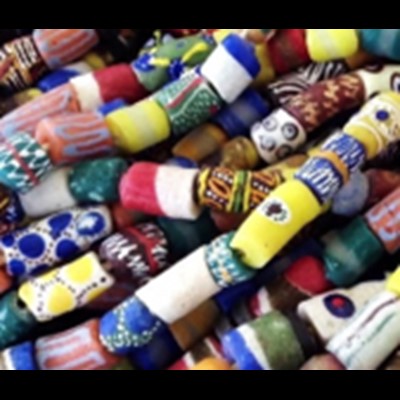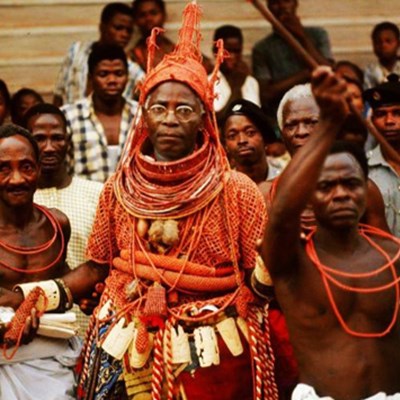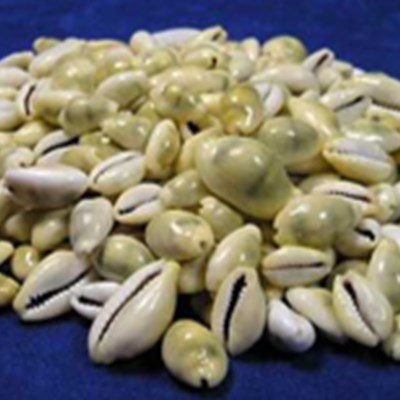Jewellery

Glass beads
It is unclear how long glass beads have been used by Africans, though there is evidence to suggest that an ancient city in southwestern Nigeria may have been one of the first places in West Africa to master the fine art of glassmaking. There is corroborated evidence to show glass beads production in African nations such as Ghana, Nigeria, Ethiopia and Krobo dating back to the 12th century. The initial method used in the production of these beads is referred to as wet-core powder method. Africans started using glass beads as currency in the 4th century, possibly brought into the continent from Portugal, though bone beads and cowry shells were used for that purpose before then. Some communities used and continue to use them as a symbol of identity, whilst many Africans enjoy wearing them as adornments. Glass beads are also widely used in African artworks. The present-day trend is to make beads from recycled glass, though fine glass beads are still produced by African artisans.

Coral beads
Coral beads have been a symbol of status and royalty in many West African cultures since the Portuguese introduced them as a trade item in the 15th century. The Mediterranean Sea being abundant with coral at that time and beads having been a popular trade item then. It may also be that the coral arrived as a raw material and was fashioned into beads in Africa, as there is a long tradition of bead making on the continent. One of our respondents, who holds 2 chieftaincies in her native country of Nigeria, showed some of the team the coral beads she holds for these offices when we interviewed her at her studio. Although there are some styles of beads which are still reserved for chiefs and kings, they are used more generally now and are frequently worn at weddings. Plastic beads are sometimes used as substitutes, these days, due to obvious environmental concerns.

Cowry shells
Cowry shells are one of the oldest forms of money in the world. In Africa they certainly date back to the infiltrations of the Arab traders along trade routes in the 8th and 9th centuries AD. It is thought by some that they may date as a form of trans-African currency to the time of the ancient Egyptians. The colonial powers (as they were to become) brought cowry shells in large numbers, from production centres in the Maldives, to West Africa, where they caught on very successfully. They were still in use in trade there up until the 1940s. Cowries still hold great significance in many parts of Africa. One of our respondents talked of their use in divination amongst the Mandinka of Gambia. Another respondent from the Ivory Coast came to the interview with cowries adorning her hair. They are also used in jewellery and crafts.
Next page: African Foods